Chord progressions can add some serious emotion, energy, and creativity to your music if done right.
Plus, they’re the key to laying down enchanting melodies 一 creating unmatched tension and release, and setting the perfect mood.
That’s why, as producers or songwriters, knowing the most epic chord progressions (both major and minor) is super important.
It will elevate your songwriting skills, fast-track your workflow, and guarantee your tracks stand out every single time.
That’s why I’m breaking down everything you need to know, including:
- The building blocks of chord progressions ✓
- The top major chord progressions ✓
- The best minor progressions ✓
- How to mix major and minor chords ✓
- Advanced techniques like modal interchange ✓
- Adding suspended and add chords ✓
- Using inversions and voicings ✓
- Creating movement with descending basslines ✓
- Power chords and secondary dominants ✓
- Much more about beautiful chord progressions ✓
After this article, you won’t only know the most beautiful chord progressions ever, but you’ll also enhance your music theory/production skills in the process.
This way, you can seriously level up your tracks, add more emotional depth, and blow the competition out of the water with creative, pro-level progressions.
And side note, you don’t need to know a thing about music theory to really understand how to bang out these beautiful chord progressions, so that’s a major plus.
Table of Contents
- The Building Blocks of Beautiful Chord Progressions
- Top 9 Major Chord Progressions
- #1. I – IV – V (C – F – G)
- #2. I – V – IV (C – G – F)
- #3. I – IV – vi – V (C – F – Am – G)
- #4. I – V – vi – IV (C – G – Am – F)
- #5. I – iii – IV – V (C – Em – F – G)
- #6. I – IV – V – IV (C – F – G – F)
- #7. I – ii – IV – V (C – Dm – F – G)
- #8. I – IV – ii – V (C – F – Dm – G)
- #9. I – IV – V – vi (C – F – G – Am)
- Top 9 Minor Chord Progressions
- #1. vi – IV – I – V (Am – F – C – G)
- #2. vi – I – IV – V (Am – C – F – G)
- #3. i – VII – VI – VII (Am – G – F – G)
- #4. i – iv – V (Am – Dm – E)
- #5. i – VI – III – VII (Am – F – C – G)
- #6. i – iv – VII (Am – Dm – G)
- #7. i – VII – v – iv (Am – G – Em – Dm)
- #8. i – VI – iv – v (Am – F – Dm – Em)
- #9. vi – ii – V – I (Am – Dm – G – C)
- Pro Techniques for Creating Your Own Beautiful Chord Progressions
- Final Thoughts
The Building Blocks of Beautiful Chord Progressions
When it comes to creating beautiful chord progressions, understanding the basics is the key, of course. Before we dive into the beautiful chord progressions on our list, you need a solid foundation. So, to kick things off, let’s break everything down.
-
Major Chords & Minor Chords: Breaking It Down

At the heart of all chord progressions in the world are major chords and minor chords.
A major chord has three notes: the root, the major third, and the perfect fifth.
For example, in the C major scale, the C major chord is built using the notes C – E – G, which creates a super bright, uplifting (and resolved) sound.
Major chords are great for setting a positive tone in your progressions, unlike minor chords which are the complete opposite.
Minor chords swap the major third for a minor third… This small change completely alters the mood, making minor chords more emotional or introspective.
For example, an A minor chord (A – C – E) feels darker but still works beautifully in contrast with major chords.
Try playing around with both types of chords in your progression to see what matches the vibe you’re going for best.
A simple chord progression example like C – G – Am – F blends the uplifting quality of major chords with the depth of a minor chord.
It will give your progression a mix of complex emotions that works in a lot of popular music (and pack a serious emotional punch).
NOTE: If you want to learn everything about major chord progressions or how to properly use a major chord progression chart, we got you covered.
-
Major Triads for Epic Chord Progressions
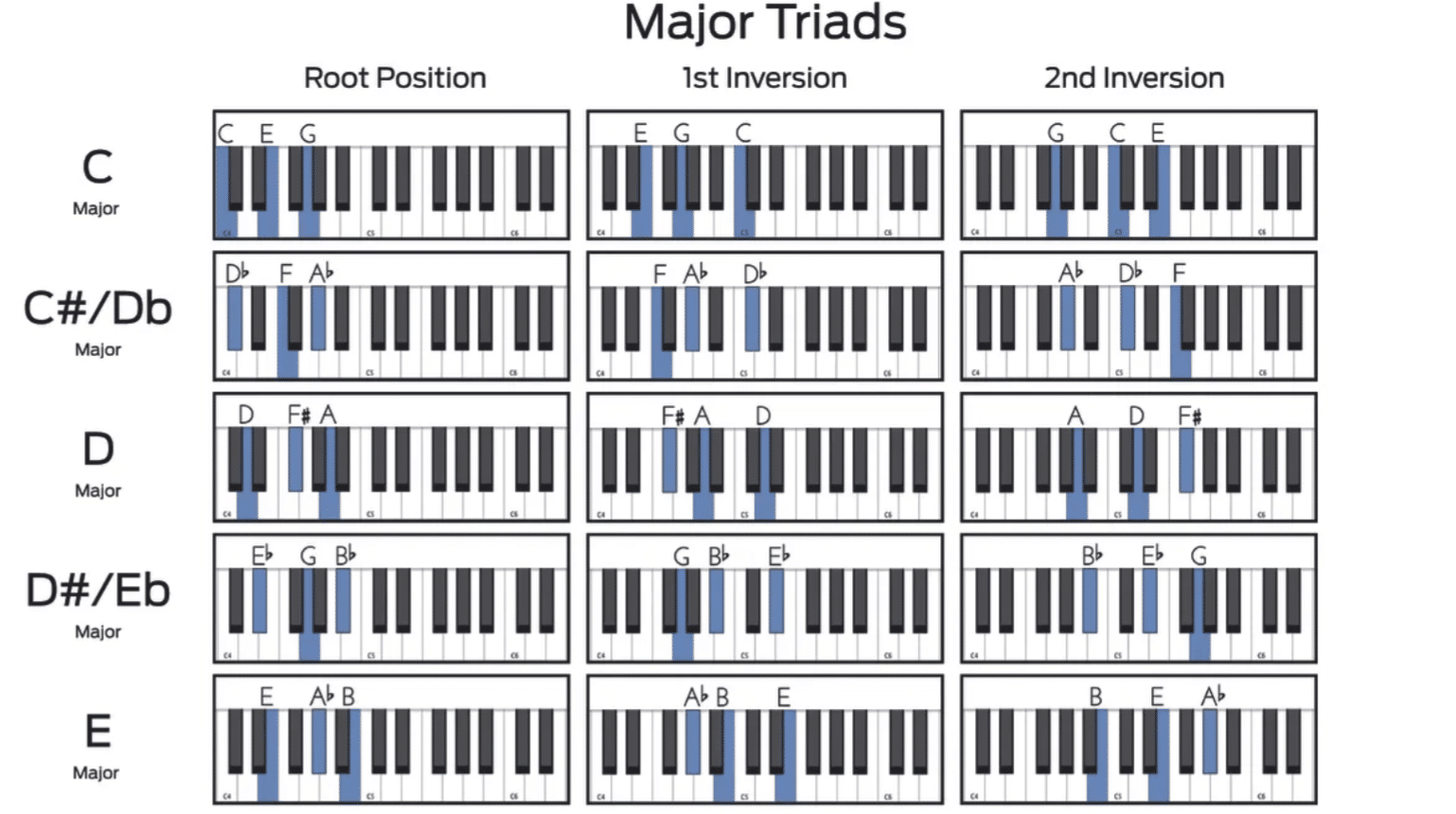
A major triad, which of course has the same vibe of all major signature sounds, consists of the root, major third, and perfect fifth.
In the C major scale, this would be the notes C – E – G, as we mentioned above.
Major triads are the foundation of almost every happy-sounding chord progression, but they’re also flexible enough to work in emotional or even super dramatic tracks.
Take the chord progression C – F – G (I – IV – V) for example… This is one of the most common chord progressions in pop and even cinematic music.
What makes it stand out is its sense of unmatched movement.
The C major triad starts the progression with a feeling of home, the F major triad (F – A – C) adds tension, and the G major triad (G – B – D) builds anticipation.
Together, they create simple progressions that are super powerful.
If you want to add more energy, try playing around with different rhythms for each chord.
For example, strumming the chords on guitar or arpeggiating them on piano can completely change the feel of the progression.
-
Minor Triads for Emotional Chord Progressions
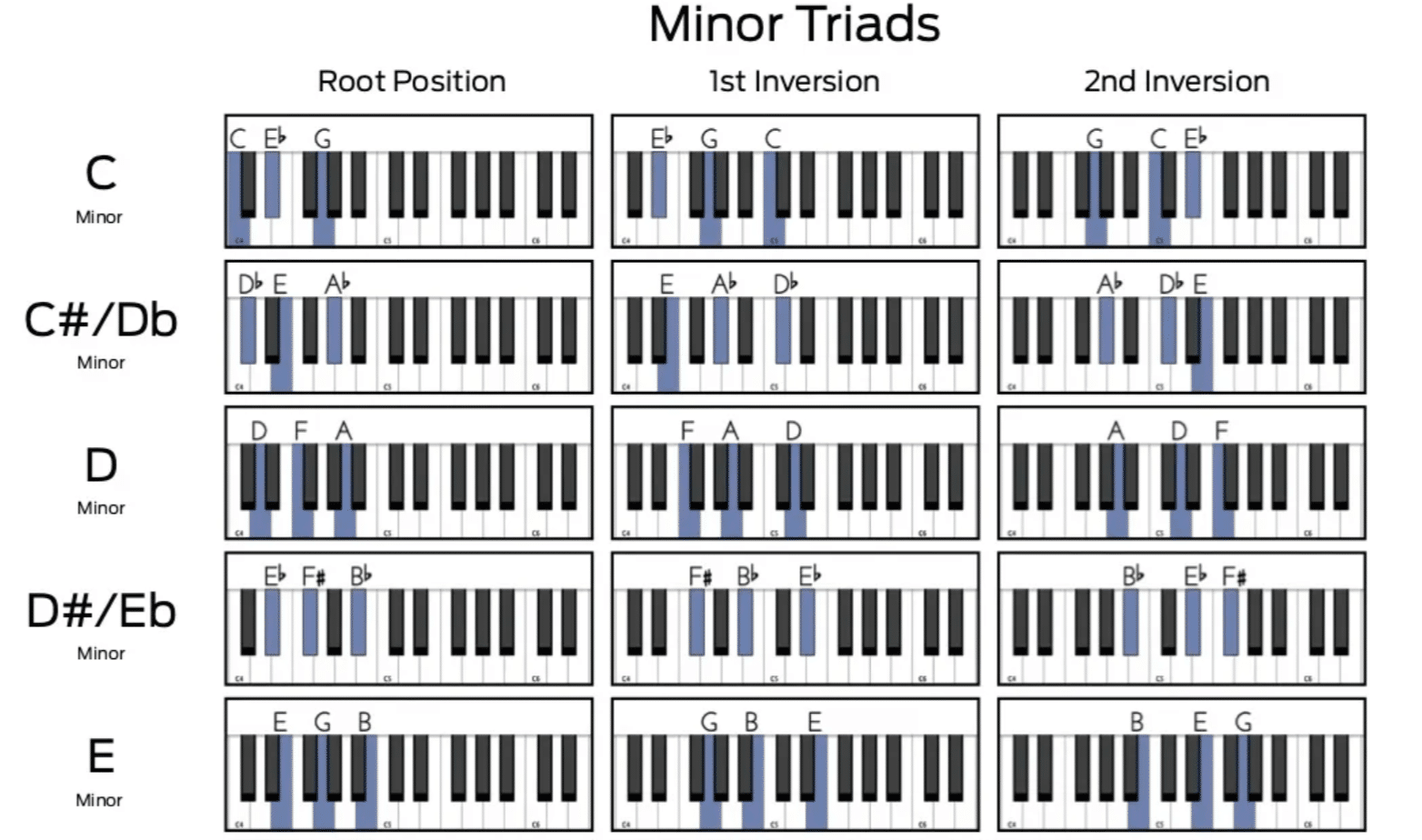
While major triads are uplifting, minor triads are perfect for building emotion; a minor triad is made of three notes: the root, the minor third, and the perfect fifth.
Let’s use A minor (Am: A – C – E) as an example because it’s the most common one.
This triad is part of the C major scale and usually appears in reflective or melancholic minor chord progressions.
Starting on the A minor triad, the progression feels undoubtedly introspective but resolves smoothly back to the brighter C major triad.
This balance is what makes minor triads so versatile.
One thing I like to do is layer melodies over minor triads to really hype up the emotional depth of the chords, which works like a charm, so definitely try that out.
For example, adding a soft piano line on top of Am – F – C – G can create a lot of emotional impact in a pop ballad or slower section of a track.
-
Borrowed Chords: Adding a Twist
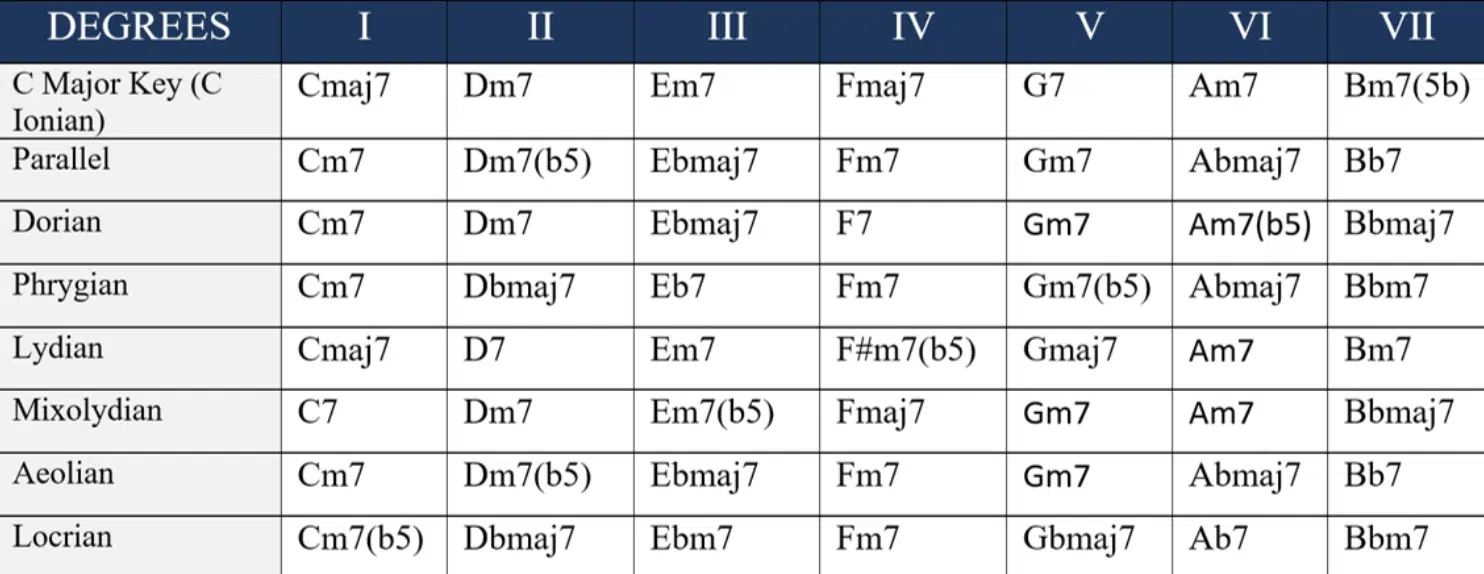
Borrowed chords are simply chords taken from the parallel key (e.g., borrowing from C minor while working in C major; super simple).
These chords can add tension, drama, or unexpected colors to your beautiful chord progressions, so don’t underestimate them.
For example, in the progression C – G – Fm – G, the Fm chord is borrowed from C minor and creates a darker, dramatic moment before going back to the major key.
Just keep in mind that a borrowed chord works best when it’s placed strategically to shift the mood temporarily 一 you don’t want to overdo it.
In my own tracks, I’ve found that adding a borrowed chord right before the final chord in a progression can make the ending feel way more dynamic.
If you’re just starting out, try using an Eb major chord (borrowed from C minor) before resolving back to C major because it’ll give your listeners a wicked moment of surprise.
-
Extended Chords: Adding Depth
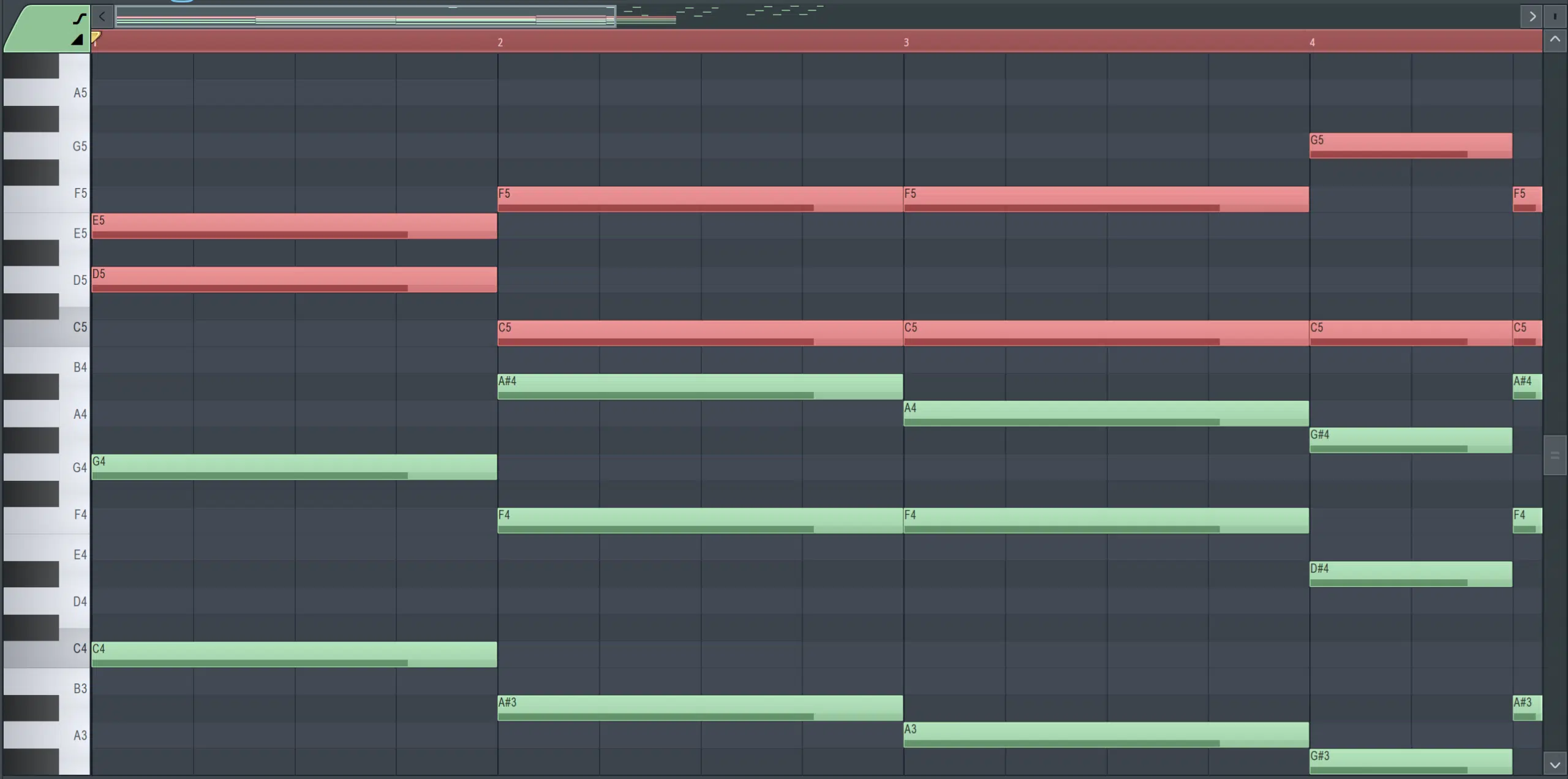
Extended chords take triads to the next level by adding extra notes, like the:
- 7th
- 9th
- 11th
- Etc.
For example, a Cmaj7 chord (C – E – G – B) adds unmatched richness without sounding too complicated, thanks to the extra notes.
A good example of extended chords is in the progression Cmaj7 – Fmaj7 – G7 – Cmaj7.
The major 7ths add a smooth, jazz feel, while the G7 chord (G – B – D – F) creates some loved anticipation before resolving back to Cmaj7.
Just keep in mind that extended chords are especially ideal for intros, bridges, or breakdowns.
If you’re new to extended chords, start by replacing just one basic chord in your progression with an extended one.
You’ll instantly see how much more dimension it adds without overwhelming the sound, and I’m sure you’ll throw them in sometimes moving forward.
-
Understanding Scale Degrees and Keys
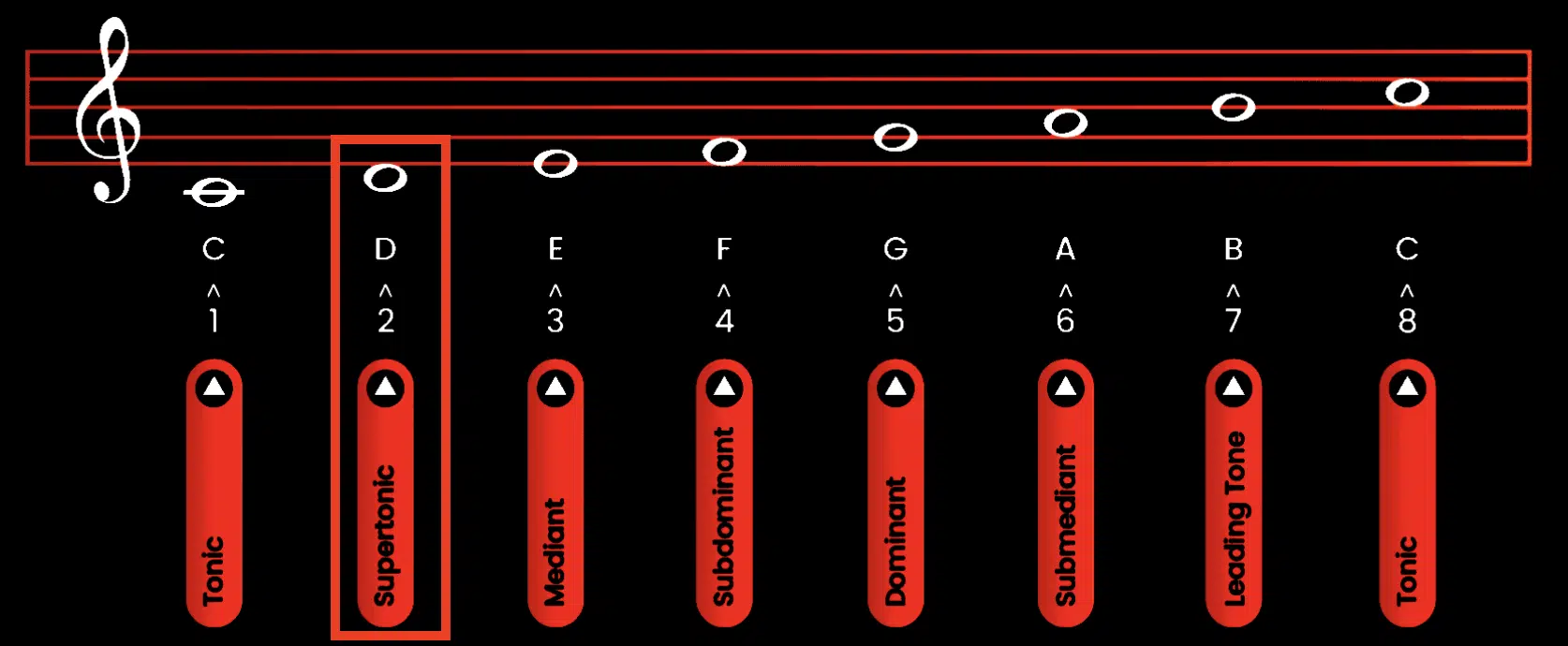
In any key imaginable, a scale degree defines the role of each chord in a progression.
Let’s take the C major scale for example again (C – D – E – F – G – A – B)…
The tonic (I) like C major feels stable and resolved, while the dominant (V), such as G major, creates tension that resolves back to the tonic.
The subdominant (IV), like F major, acts as a bridge between the tonic and dominant, while the submediant (vi), such as A minor, brings an emotional or reflective tone.
Using scale degrees lets you build progressions with intention, whether it’s the timeless I – IV – V – I or something more complex like I – vi – IV – V.
To experiment and switch things up, try swapping the dominant chord with a borrowed or extended chord for added flavor.
This understanding gives you the flexibility to knock out chord progressions that match the emotion and energy of your track.
-
Pro Tip: Borrowing Chords from Other Modes
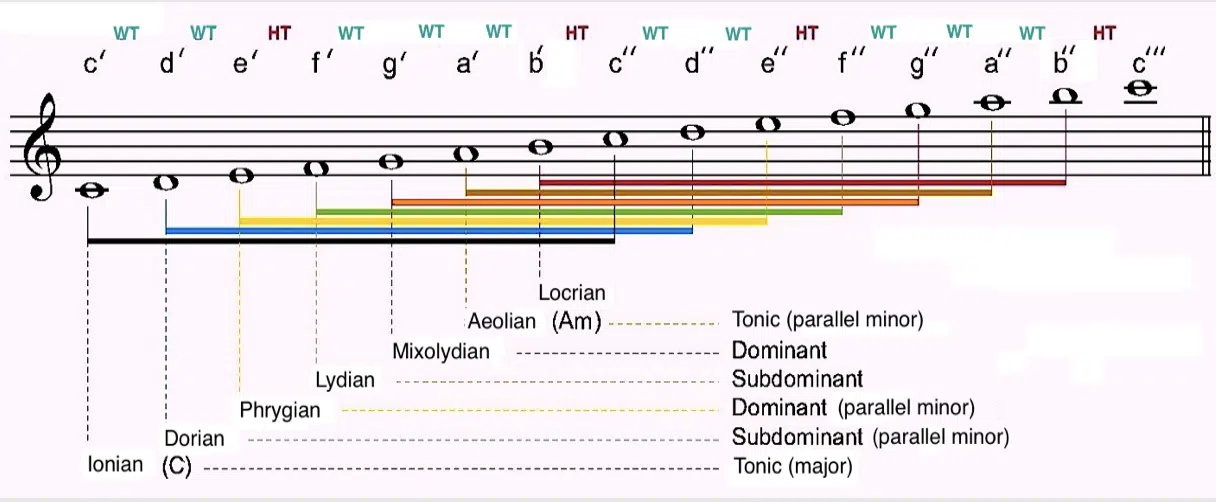
Borrowing chords from different modes can give your chord progressions a fresh and unique sound that people really react to.
For example, the Dorian mode, derived from the second degree of the C major scale (D – E – F – G – A – B – C), offers a brighter minor feel due to its raised 6th degree.
You could use a D minor chord (D – F – A) followed by A minor (A – C – E) to create a subtle shift that feels modern yet familiar.
On the same note, the Mixolydian mode (built on the fifth degree, G Mixolydian) introduces a flattened 7th.
This makes G7 (G – B – D – F) a great substitute for a standard G major chord.
When I first started borrowing chords from modes, I noticed how these small adjustments added crazy depth to my progressions without overcomplicating them.
A simple way to explore this is by swapping a traditional V chord (like G major) with G7 or replacing a vi chord (A minor) with Dorian’s Dm7 (D – F – A – C).
This will give you a super intriguing, jazz-like feel that’s pretty interesting.
Borrowed chords from modes are subtle, I can’t lie, but it can completely transform the mood of your track.
Top 9 Major Chord Progressions
Some beautiful chord progressions are timeless for a reason. They work across different genres and bring out the best in both melodies and harmonies. In this next section, we’ll break down the top 9 major chord progressions, starting with classic structures and how you can use them in your music production process.
#1. I – IV – V (C – F – G)
The I-IV-V chord is one of the most common chord progressions in the game, found in everything from classical music to modern pop.
Starting with the C major chord (C – E – G), it feels complete and grounded.
The transition to F major (F – A – C) then adds a sense of movement, and the G major chord (G – B – D) creates tension that begs to resolve back to the C major chord.
This chord progression is simple but incredibly versatile.
For example, if you strum these chords on guitar or play them in block chords on piano, they immediately sound familiar and comforting.
To modernize this chord progression, try adding a G7 chord (G – B – D – F) at the end instead of a standard G major 一 giving it a slightly bluesy feel.
This chord progression works especially well for intros, verses, or any part of a track where you want a classic, upbeat vibe (it works with different styles too, though).
#2. I – V – IV (C – G – F)
This second chord progression flips the order of the previous one:
- Starting with C major (C – E – G)
- Moving to G major (G – B – D)
- Then, to F major (F – A – C)
What makes this sequence special is that it opens with resolution but quickly moves into the dominant chord, creating anticipation.
The final shift to F major provides a smoother, reflective conclusion.
This chord progression is great for choruses or mind-blowing outros because it doesn’t feel as circular as I – IV – V.
For example, I’ve used this in a lot of pop music hits 一 layering it with arpeggiated synths to create movement (this is key in my opinion).
You can also play around with different rhythms, like syncopation on the G chord, to add more energy and hype.
#3. I – IV – vi – V (C – F – Am – G)
This is one of the most popular beautiful chord progressions in modern pop music sounds, and it starts with C major (C – E – G) for a sense of resolution.
Then it transitions to F major (F – A – C), which lifts the progression perfectly, before diving into the intense emotional depth of A minor (A – C – E).
Finally, the G major (G – B – D) chord brings that epic tension and resolves beautifully back to C major.
What makes this chord progression special in my opinion is its ability to blend uplifting and reflective emotions flawlessly.
NOTE: To give it a fresh twist, try replacing A minor with Am7 (A – C – E – G) for a softer, jazz feel.
I’ve used this chord progression in many ballads and slower sections of chord songs because it leaves plenty of space for melodies to shine.
If you’re producing vocals, this chord progression creates a perfect foundation for lyrical storytelling that really sticks with listeners long after the song ends.
#4. I – V – vi – IV (C – G – Am – F)
The I-V-vi-IV progression is super versatile as well, and it’s known around the world, especially when it comes to modern pop music.
Starting with C major (C – E – G), this chord progression moves to G major (G – B – D), which creates a sense of anticipation.
The shift to A minor (A – C – E) adds emotional depth, and the final move to F major (F – A – C) provides a softer resolution.
What makes this chord progression stand out is its ability to balance energy and emotion in a really addicting way.
For example, you can use it in a ballad with soft strumming or arpeggios, or in an upbeat track with driving rhythms.
I’ve found that emphasizing the bass notes in each chord (playing C, G, A, and F in the left hand of a piano while arpeggiating the chords with the right hand) creates a lot of dynamic movement.
This chord progression works great for choruses, as it builds tension while remaining familiar to listeners 一 anything to stick in their head, really.
#5. I – iii – IV – V (C – Em – F – G)
This is one of those less common beautiful chord progressions, but it’s still pretty official and can really add some uniqueness to your track.
It introduces the E minor chord (E – G – B), which is less common but adds a fresh dynamic to the sequence.
Starting with C major (C – E – G), the progression shifts to E minor, giving it a slightly introspective tone.
The F major chord (F – A – C) then provides stability before moving to G major (G – B – D) to build tension, like all good major chord progressions.
It’s perfect for adding variety to your emotional chord progressions while keeping things accessible and interesting.
For example, you can play around with adding a G7 chord (G – B – D – F) at the end for a bluesy feel.
I’ve used this chord progression myself in verses to create a sense of storytelling, where the minor iii chord adds subtle emotion without overwhelming the progression.
Needless to say, it really worked out.
#6. I – IV – V – IV (C – F – G – F)
This intriguing progression has a ‘looping’ quality that makes it feel finished yet not finished at the same time, if that makes sense.
It starts with C major (C – E – G), moves to F major (F – A – C) for a lift, shifts to G major (G – B – D) for tension, and then circles back to F major.
The repetition of the F chord at the end keeps the progression feeling smooth and super fluid, unlike some other beautiful chord progressions.
I like to use this one in background music or instrumental sections because of its flowing nature (I’ve used it in a few tracks I did for movies actually).
For example, layering soft pads or strings over this chord progression creates a calming and atmospheric sound that is a whole vibe; very chill.
NOTE: Try switching up the voicings of the F major chord (e.g., F/A or F/C) to add subtle movement.
#7. I – ii – IV – V (C – Dm – F – G)
By introducing the D minor chord (D – F – A), this chord progression has a slightly more emotional tone than the other beautiful chord progressions on our list.
However, it does still stay firmly rooted in the C major scale at the same time.
Starting with C major (C – E – G), the chord progression moves to D minor 一 adding a touch of contemplation.
The F major chord (F – A – C) provides a lift before the G major chord (G – B – D) builds tension and that’s what it’s all about.
It’s great for bridges or pre-choruses because the minor ii chord adds a transitional feel.
NOTE: One thing I like to do is add D minor 7 (D – F – A – C) instead of just D minor, as it softens the sound and makes it feel more modern.
This chord progression works well for building anticipation before resolving to a chorus.
#8. I – IV – ii – V (C – F – Dm – G)
This uplifting progression creates a natural rise and fall of tension 一 starting with C major (C – E – G), it moves to F major (F – A – C), lifting the mood.
The D minor chord (D – F – A) adds a reflective quality, and the final G major chord (G – B – D) finishes off the tension back to C major.
What’s unique here is how the ii chord goes against the brighter IV chord to add even more emotional depth than some other beautiful chord progressions.
You can play around with rhythm by holding the F chord longer to emphasize its brightness before transitioning to D minor.
In my experience, this chord progression works perfectly in slower tracks, especially with subtle dynamics on piano or when paired with guitar sounds.
#9. I – IV – V – vi (C – F – G – Am)
The I-IV-V-vi progression blends uplifting and emotional tones like an absolute boss.
Starting with C major (C – E – G) and moving to F major (F – A – C), it sets a bright and solid foundation to build off of.
The G major chord (G – B – D) adds tension, and the final move to A minor (A – C – E) provides that much-needed emotional release.
One reason this chord progression is so popular is its ability to shift the emotional tone at the end with the minor vi chord.
In my own tracks, I’ve found that arpeggiating the Am chord over multiple octaves creates an ethereal effect.
Pairing this one with a melody that mirrors the descending motion of F – G – Am can amplify its emotional impact.
Top 9 Minor Chord Progressions
When it comes to beautiful chord progressions, minor keys are where things get really deep and emotional. These minor progressions are all over modern music because they balance tension, introspection, and resolution in a way that really connects with listeners. So, moving on from major chord progressions, let’s break down some of the most epic chord progressions in minor and how to use them.
#1. vi – IV – I – V (Am – F – C – G)
If we’re talking about sad chord progressions, this one is a true classic (and for good reason) 一 blending deep emotion with familiarity.
This chord progression:
- Starts with A minor (A – C – E)
- Next, moves to F major (F – A – C)
- Then C major (C – E – G)
- Lastly, the final shift to G major (G – B – D)
One thing I love about this chord progression is how versatile it is…
You can slow it down for a ballad or speed it up for a more upbeat track, dealer’s choice.
I’ve used it in projects where I layered a soft synth pad under the chords and then added subtle strings to the F major chord to give it more intrigue.
If you want to spice it up, try swapping the G major chord for a G7 (G – B – D – F) to add a touch of blues, which I find super intriguing.
#2. vi – I – IV – V (Am – C – F – G)
Next, we have the vi-I-IV-V, which is one of the most beautiful chord progressions in the game and is found all throughout pop and acoustic music.
You start with A minor (A – C – E), but it quickly moves to C major (C – E – G) 一 brightening things up just enough to avoid feeling too dark.
The F major chord (F – A – C) adds a sense of weight, and then the G major chord (G – B – D) gives that necessary tension.
What I like to do with this chord progression over some other sad chord progressions/emotional chord progressions is use it in verses where things are mellow.
For example, I once recorded it on an acoustic guitar, but instead of strumming, I plucked the chords to let each note ring out.
It added a softer, more intimate feel to the track that was legendary.
NOTE: If you’re producing with your MIDI keyboard, try arpeggiating the chords (playing the notes individually instead of together) to create more texture.
#3. i – VII – VI – VII (Am – G – F – G)
This progression is used all the time in modern music, especially in genres like trap and EDM (and other like genres).
It starts off with A minor (A – C – E), which immediately pulls you in with its darker vibe that people really love.
Then you move to G major (G – B – D), which adds some movement.
The shift to F major (F – A – C) feels grounded and warm 一 but going back to G major brings tension and keeps things looping around.
I’ve used this chord progression in tracks where I wanted something that could keep repeating without feeling stale, basic, or boring.
One trick I like is adding a sub-bass that follows the root notes (A, G, F, G) to give it more depth, especially in the low end.
NOTE: Playing with different rhythms on the F chord, like holding it longer or syncopating it, can help you keep the progression feeling fresh, so try that out.
#4. i – iv – V (Am – Dm – E)
This is one of the most straightforward minor chord progressions/common chord progressions out there, but it’s super official.
You start with A minor (A – C – E), which sets a clear emotional tone. Moving to D minor (D – F – A) adds a richer, more introspective feel.
Then the E major chord (E – G# – B) surprises the listener because it has a raised third, making it stand out in a minor key.
What makes this chord progression so powerful is how much tension the E major chord creates, way more than most of the other beautiful chord progressions.
I’ve used it in sections where I wanted a big build-up, like a pre-chorus leading into a drop, and it worked out perfectly.
You can emphasize the tension even more by holding the E chord longer or doubling its melody an octave higher.
#5. i – VI – III – VII (Am – F – C – G)
If you’re looking for beautiful chord progressions with the ultimate contrast, then look no further than this one.
It starts on A minor (A – C – E), which feels emotional on another level, but the shift to F major (F – A – C) and C major (C – E – G) lifts the progression super high.
Finally, G major (G – B – D) brings some tension, but it’s not too heavy, so the progression feels more balanced, which is the perfect balance/contrast.
I’ve used this minor chord progression in cinematic pieces where I wanted a mix of light and shadow.
For example, starting with soft strings on the A minor chord, then adding brass or woodwinds on F major and C major, creates a sweeping, dynamic sound.
If you’re working on electronic music, try side-chaining a pad to a kick drum over chord this progression; it creates a pulsing effect that gives the chords more movement.
In my opinion, that pulsing effect is super epic, and if you’re like me, you definitely have to try that out.
#6. i – iv – VII (Am – Dm – G)
This beautifully broken chord progression begins with A minor (A – C – E), creating a somber/sad and reflective mood.
The move to D minor (D – F – A) deepens the emotional pull, which gives the sequence a sense of longing and wanting, that kind of thing.
Finally, the shift to G major (G – B – D) brings in a touch of brightness 一 making it feel hopeful but not fully resolved.
This chord progression is perfect for building sad chord progressions in ballads or emotional verses.
If you’re working on a song that needs a delicate balance of darkness and light, this sequence works really well with softer instrumentation like acoustic guitar or piano.
My advice: use reverb on the D minor chord to make it feel bigger, and add a high octave on the G chord to make the transition more dramatic; thank me later.
#7. i – VII – v – iv (Am – G – Em – Dm)
This sequence alternates between tension and release, starting with the emotional pull of A minor (A – C – E), and like everything else, things need a little yin and yang.
Then, the switch to G major (G – B – D) adds brightness and throws in some serious momentum in there.
From there, the move to E minor (E – G – B) introduces a haunting quality, and D minor (D – F – A) ties everything together with a warm but unresolved finish.
This minor chord progression is perfect when it comes to more modern music like EDM or trap, especially in builds or intros.
If you want to create an epic atmosphere, layer the chords with a subtle sub-bass that emphasizes the root notes (A, G, E, D).
You can keep the rhythm tight on the E minor chord and let the D minor chord ring out slightly longer to give it more emotional impact.
#8. i – VI – iv – v (Am – F – Dm – Em)
This minor chord progression captures both sadness and resolution, starting with A minor (A – C – E), then lifting slightly with F major (F – A – C).
The D minor chord (D – F – A) anchors the sequence, while the E minor chord (E – G – B) adds subtle tension that resolves back to A minor.
This is a great choice for slower, emotional tracks, especially in musical genres like lo-fi, R&B, or ambient music.
To give it more life, try arpeggiating the chords or layering soft pads to add texture.
What I like to do is emphasize the F major chord with a higher voicing to bring out its brightness to make the progression feel less heavy without losing its emotional depth.
#9. vi – ii – V – I (Am – Dm – G – C)
This one transitions flawlessly from minor to major, starting with A minor (A – C – E) for an introspective opening.
The move to D minor (D – F – A) keeps the mood grounded, while G major (G – B – D) builds tension.
Finally, C major (C – E – G) resolves the sequence with a bright and satisfying finish.
This is one of the most versatile beautiful chord progressions for bridging darker verses into uplifting choruses, perfect for pop or cinematic music.
Really, any time you want some serious conflict, it’s perfect.
You should emphasize the transition from G major to C major by adding a suspended note (G – C – D) to the G chord just before resolving.
It adds a dramatic lift that feels intentional and super professional.
Pro Techniques for Creating Your Own Beautiful Chord Progressions
Now that you have a solid understanding of the basics, and have heard examples of both major and minor progressions, it’s time for advanced techniques. These tricks can help your progressions stand out and feel more dynamic, whether you’re building tension, adding movement, or giving your last chord a memorable twist. Let’s get into it.
-
Inversions and Voicings
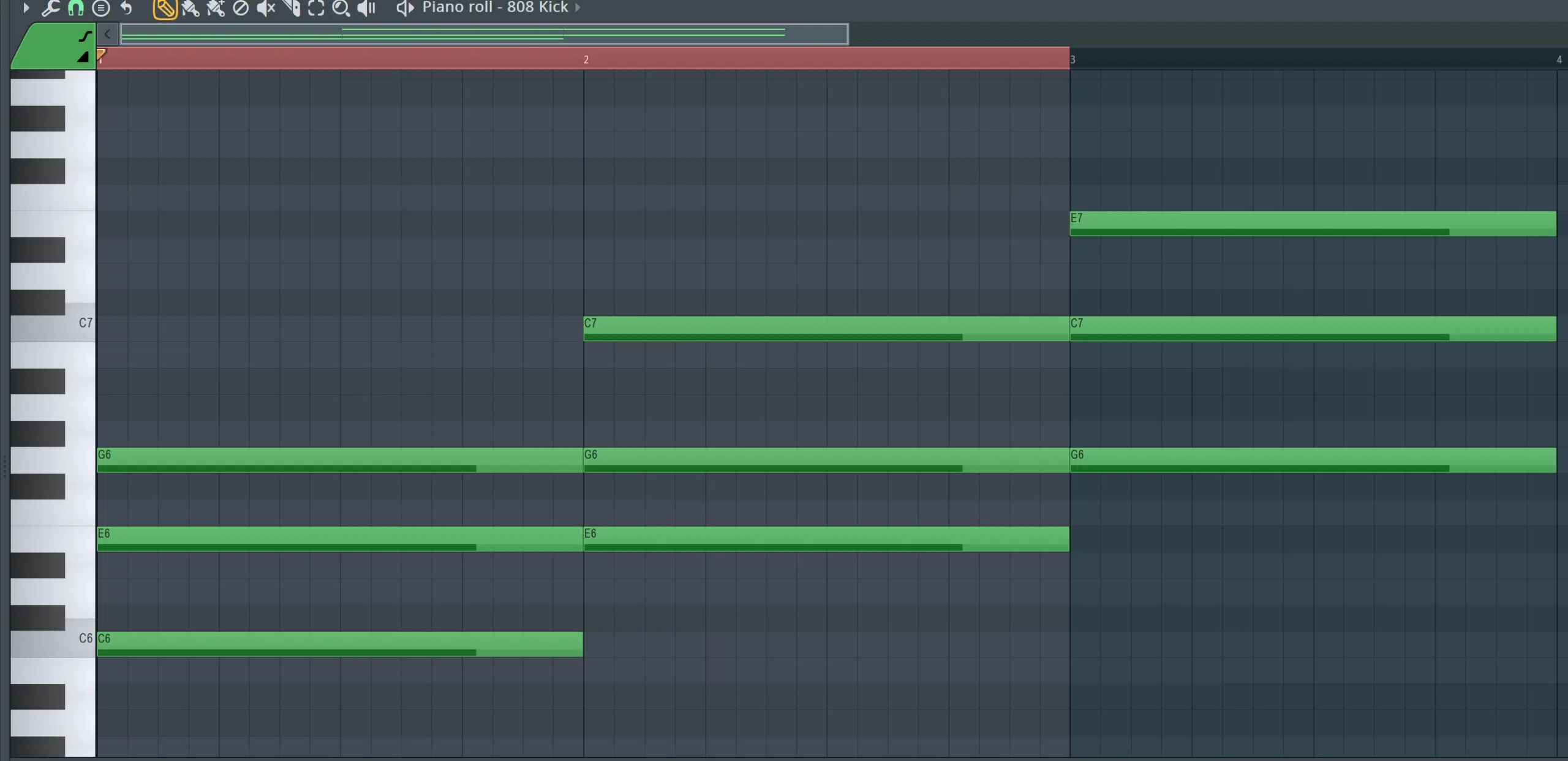
Inversions are when you change the order of the notes in a chord, so a different note becomes the bass, just like the name implies.
For example, instead of playing C major as C – E – G, you could play E – G – C (first inversion) or G – C – E (second inversion); super straightforward.
This makes transitions smoother and avoids that “blocky” feel some beautiful chord progressions can sometimes have.
If your progression is C – G – Am – F, try using G in first inversion (B – D – G) so the jump to A minor feels more connected.
Voicings take things further by spreading the notes out or clustering them differently.
For example, you could play C major as C – G – E with the E placed an octave higher for a dope, brighter sound.
NOTE: If you’re working with emotional chord progressions, play around with inversions in the last chord to give it a fresh, unexpected finish.
-
Using Modal Interchange
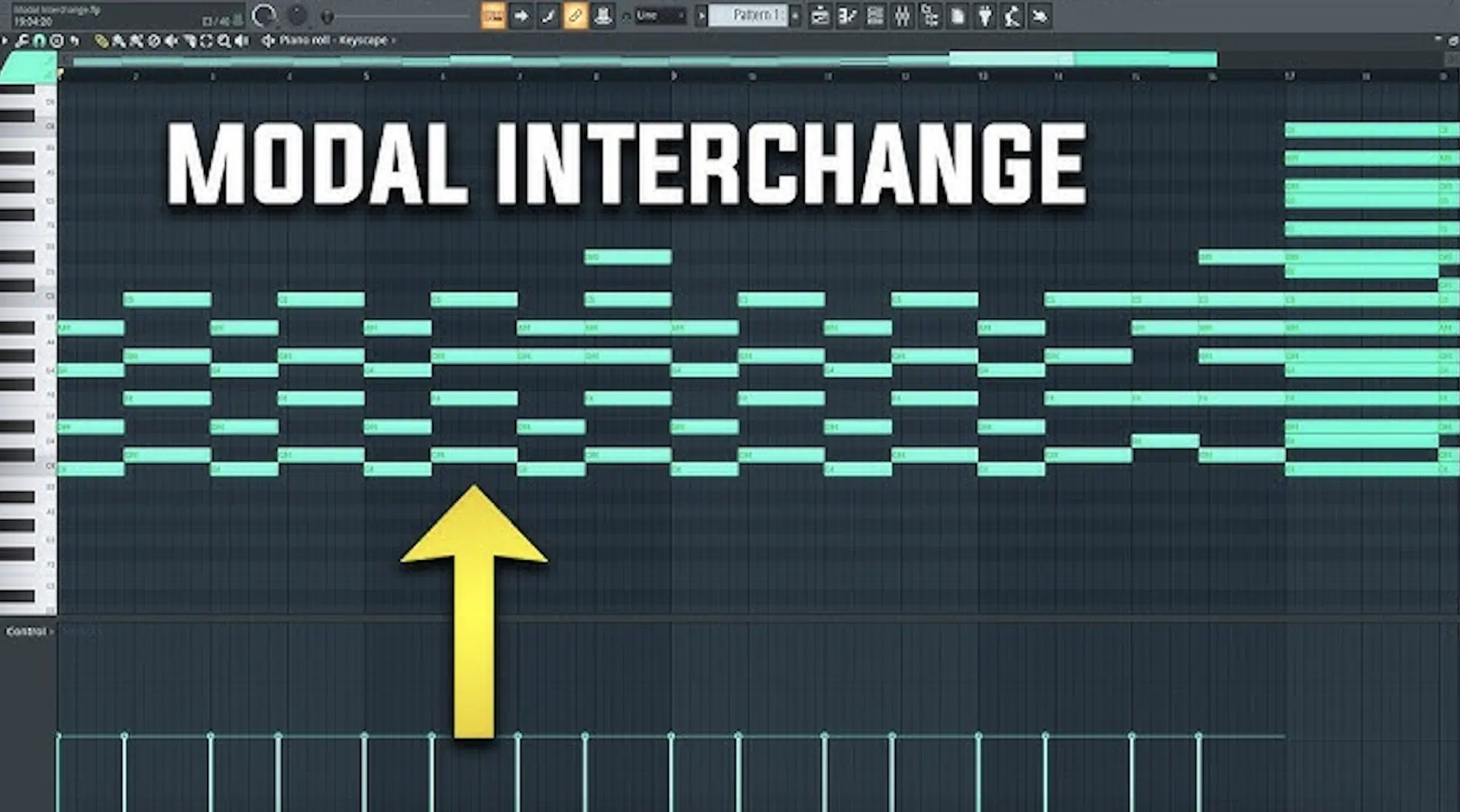
Modal interchange is when you borrow chords from a parallel mode to make your progression more interesting and appealing.
For example, if you’re working in C major, you could borrow chords from C minor, like Ab major (Ab – C – Eb) or Eb major (Eb – G – Bb).
This will add depth and a little bit of surprise to your chord progression without fully changing the key altogether.
Take a basic progression like C – G – F – G, and swap F major for Ab major to create C – G – Ab – G.
It completely changes the mood while still sounding connected to the original key.
This trick is super useful in bridges or breakdowns where you want to catch the listener off guard and hook them in for the rest of the track.
You should use modal interchange not too much to make key moments pop, like the last chord in a progression or at the climax of a track.
-
Incorporating Suspended and Add Chords
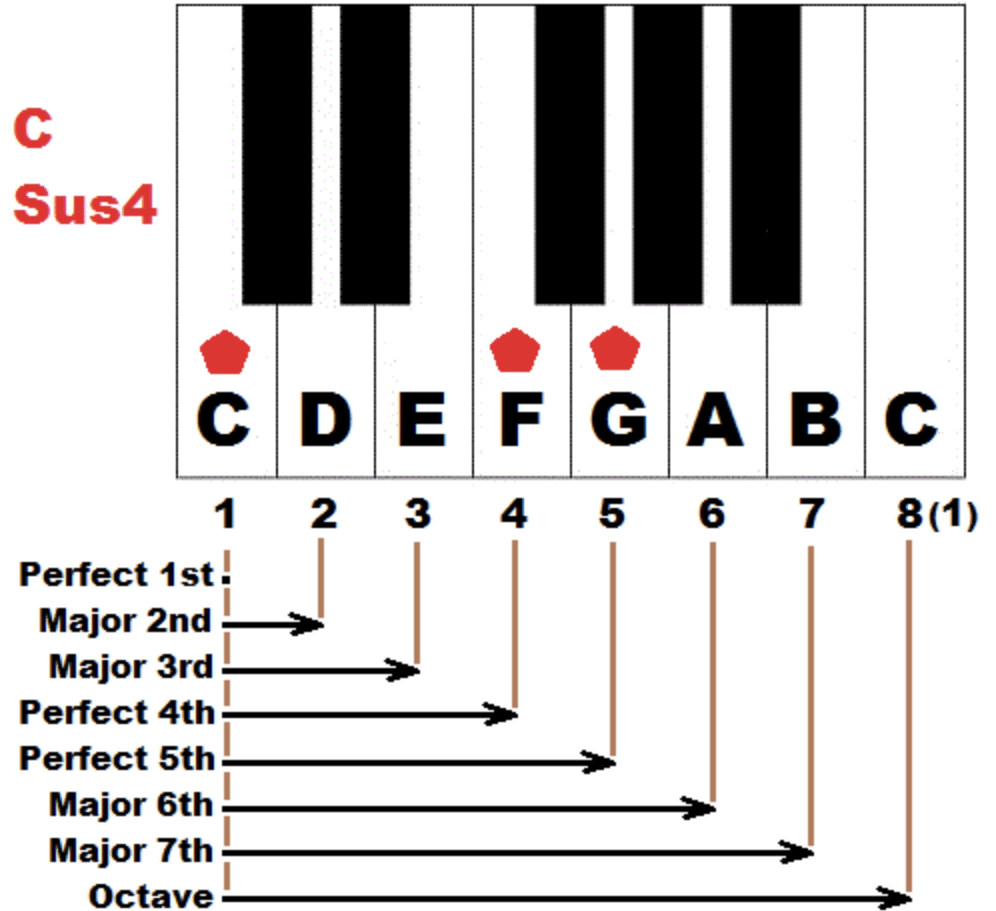
Suspended chords, or “sus” chords, swap out the third of a chord for either the second (sus2) or fourth (sus4).
This creates tension because the chord feels unresolved, like it’s “hanging” in the air.
For example, C sus4 (C – F – G) replaces the Ein C major with F, making it feel like it’s waiting to resolve back to C major.
Add chords, like Cadd9 (C – E – G – D), keep the core notes of the chord but add extra ones for more richness/depth.
You can try using a C sus4 at the start of a progression like C – Csus4 – G – F to grab attention.
Or, on the flip side, finish with an Fadd9 (F – A – C – G) in a progression like C – Am – Fadd9 – G to give the last chord more emotional weight.
These chords are super perfect for intros, outros, or transitions.
My tip is to pair suspended chords with a light arpeggio or delay effect to make them feel even more atmospheric.
-
Layering Different Rhythms with Chord Progressions
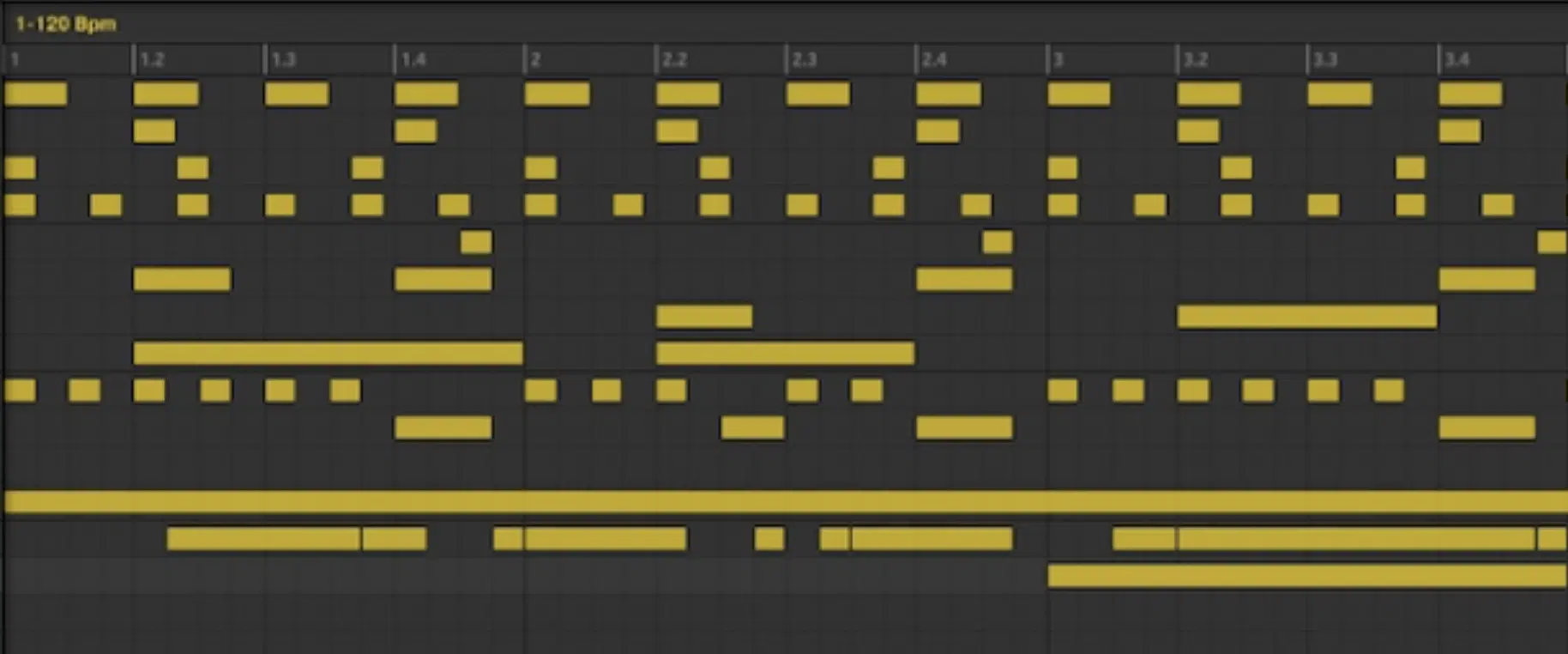
Rhythm is just as important as the chords themselves, and layering different rhythms can completely transform how your emotional chord progressions feel.
For example, in a progression like C – G – Am – F, you can try:
- Playing C major as a sustained chord
- Then, strumming G major and Am in faster rhythms
- Finally, finishing with a syncopated F major
This creates movement and keeps the progression from sounding repetitive.
For even more depth, layer a simple melody on top of the chords that uses scale degrees to highlight key moments 一 like resolving to the tonic (C in C major).
My advice is to play around with different rhythms for the last chord in your progression to leave a lasting impact and have them hitting that repeat button.
Bottom line, using rhythm creatively can add emotional depth and even simple chord progressions feel fresh.
-
Pro Tip: Power Chords (Keep It Simple Yet Strong)
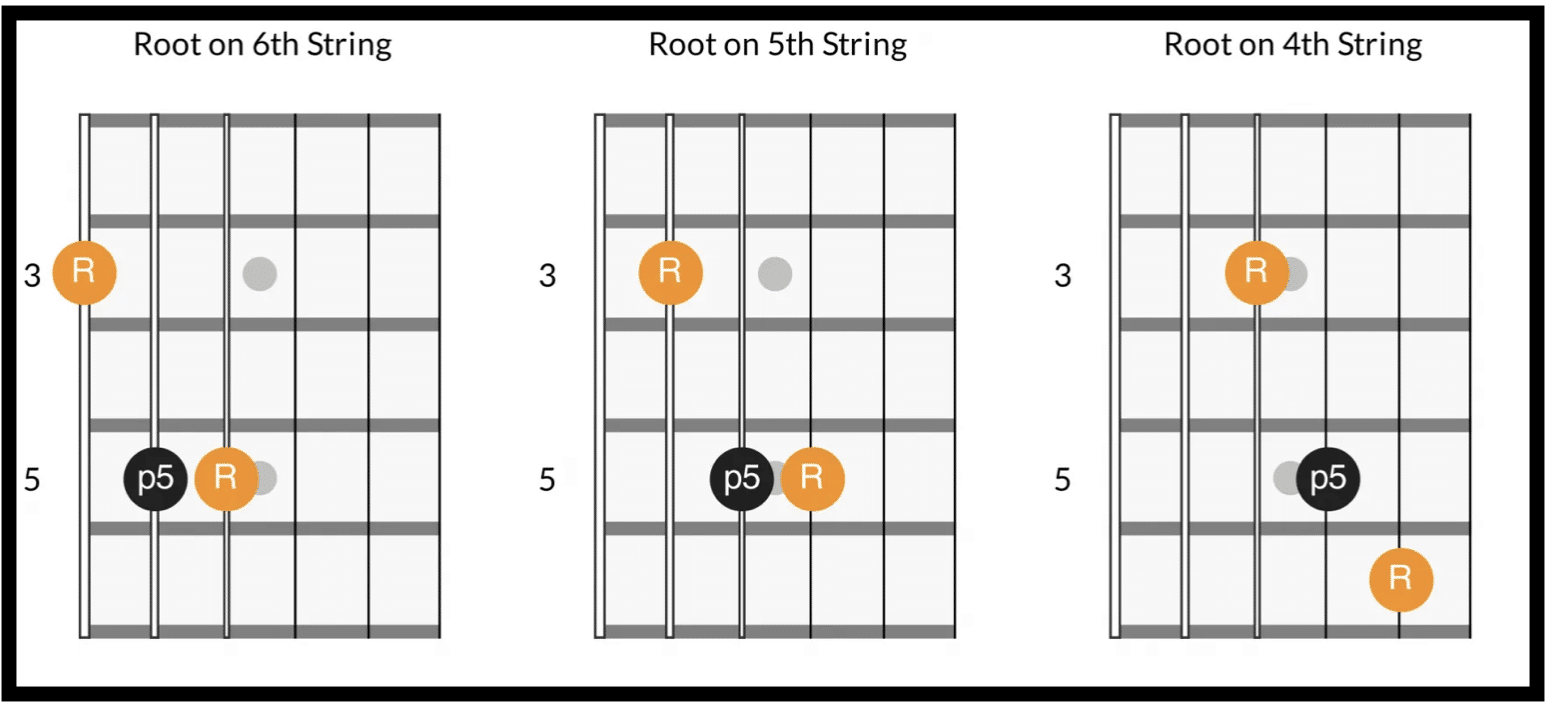
A power chord is made up of just two notes: the root and the fifth.
While technically not a full chord, power chords pack a punch because of their simplicity mixed with the impact they undoubtedly bring to the table.
For example, a C power chord (C5: C – G) cuts through the mix 一 making it great for genres like rock or EDM.
Power chords work best when you want a clean, strong sound that doesn’t clutter the mix and needs a killer moment.
For example, a chord progression like C5 – G5 – F5 – G5 works perfectly in high-energy sections of a track.
One thing I’ve noticed is that layering power chords with synths or distorted guitars adds even more intensity to a progression.
NOTE: Try combining power chords with rhythmic variations. Playing C5 on the downbeat and G5 with syncopation can give your progression a more dynamic feel.
Final Thoughts
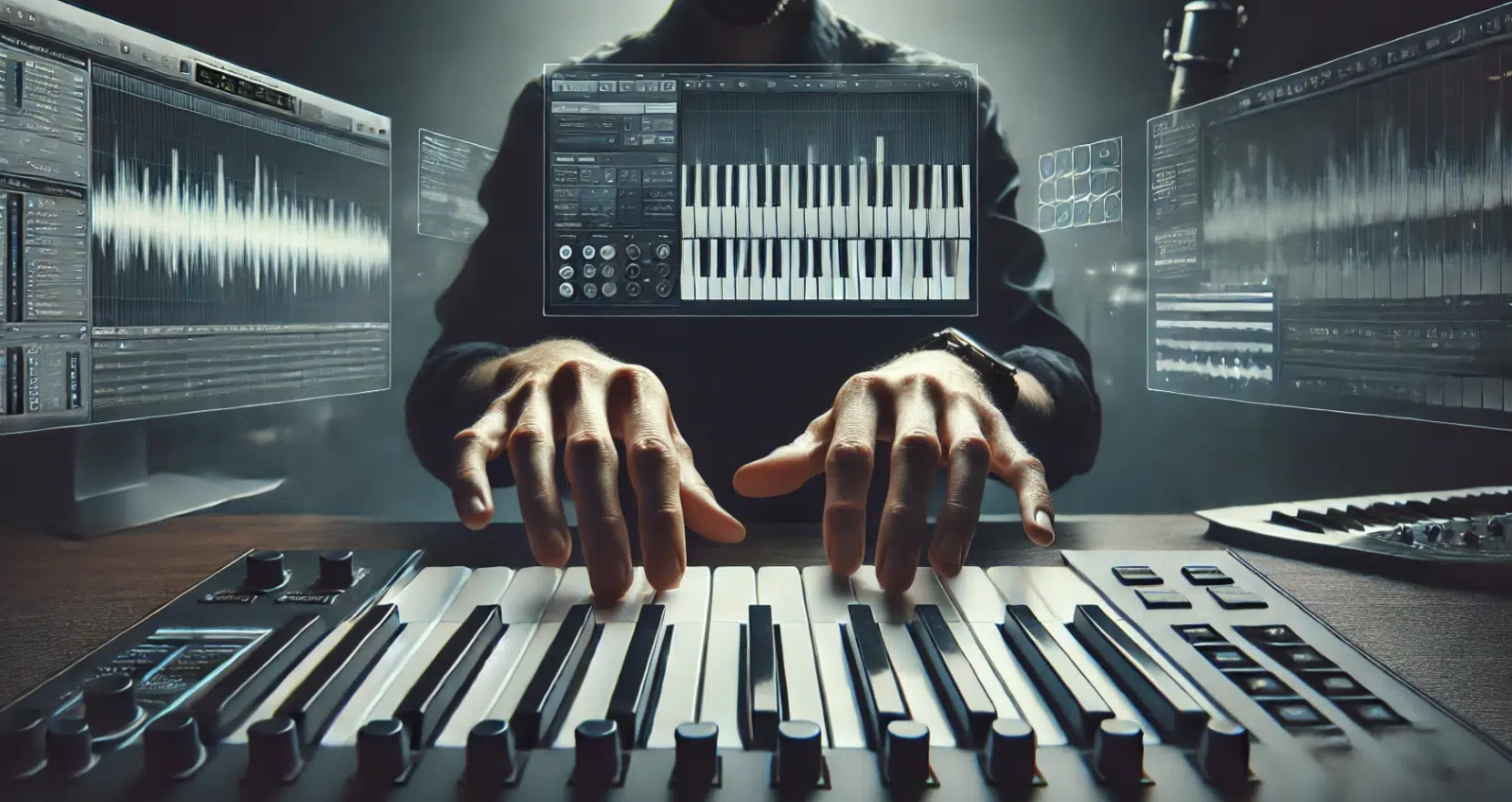
Beautiful chord progressions, whether they’re sad or happy, can really make your tracks stand out like never before.
They set the mood, support your melodies, and create moments that stick with your listeners they won’t forget.
Plus, they bring some serious emotion, depth, and creativity to the table, and there’s really nothing more important than that.
And now, after what we talked about today, you’ll be able to knock out your own beautiful chord progressions like an absolute boss.
This way, your tracks will always sound polished and professional, and you’ll have the tools to experiment with new ideas all day to make things extra interesting.
As a bonus, check out the Free Emotional MIDI Chord Progressions pack, which is packed with some of the sickest emotional chord progressions in the game.
They were made specifically for producers like you, by the top producers in the game.
It includes expertly designed MIDI files that work in any DAW, making it super easy to drop them into your projects and manipulate them however you’d want.
Whether you’re after epic chord progressions or something more reflective for sad chord progressions, this pack has you covered.
With hundreds of combinations to explore, it’s like having pro-level cheat codes for creating emotional depth in your tracks.
Plus, the quality and versatility are unmatched 一 making it a must-have for producers who want to level up their music production skills right now.
So, now that you have all this knowledge and the techniques to back it up, there’s nothing stopping you from creating legendary tracks.
Just remember to keep pushing boundaries, stay creative, and most importantly, have fun with it.
Until next time…







Leave a Reply
You must belogged in to post a comment.